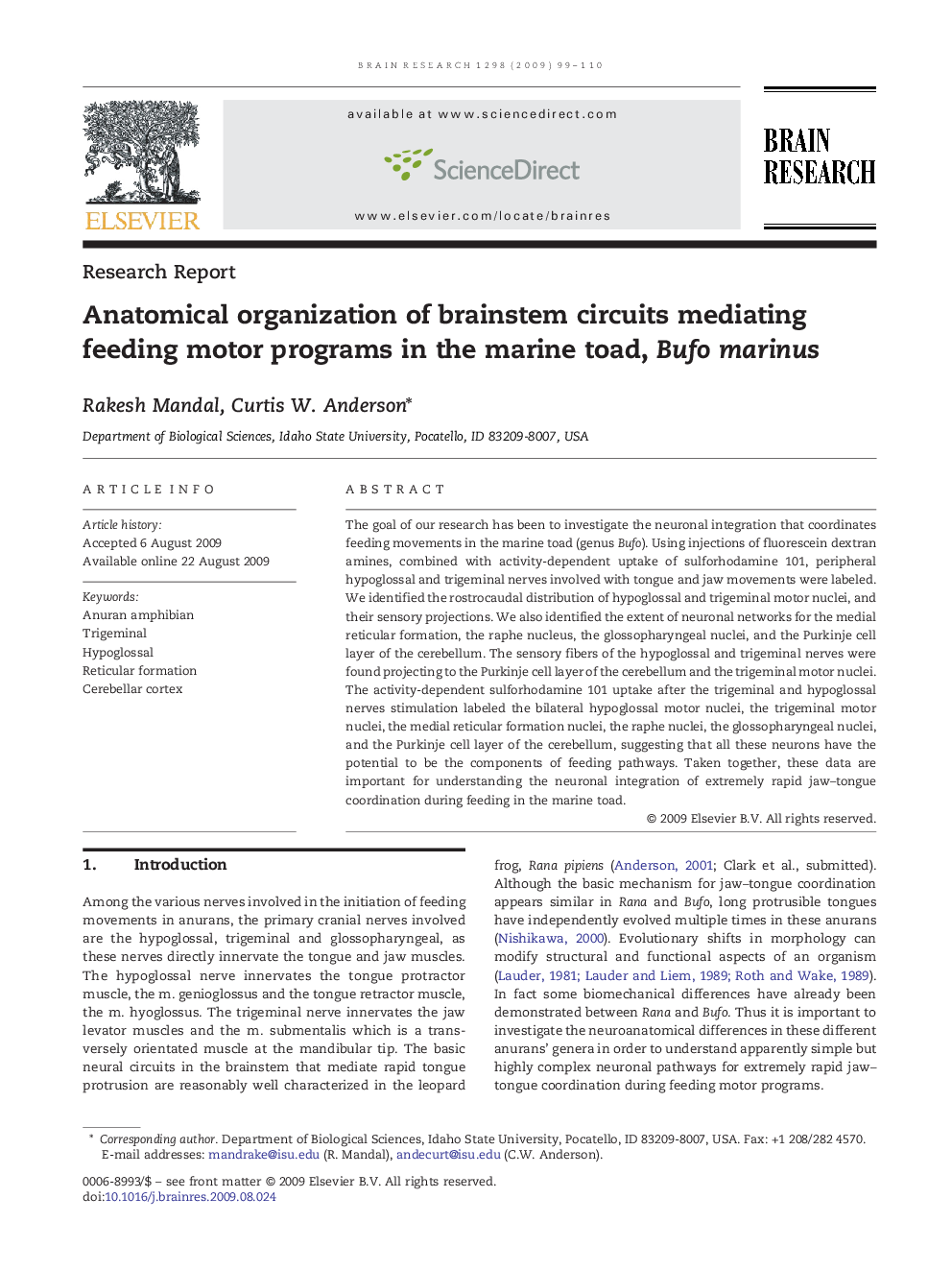| Article ID | Journal | Published Year | Pages | File Type |
|---|---|---|---|---|
| 4327737 | Brain Research | 2009 | 12 Pages |
The goal of our research has been to investigate the neuronal integration that coordinates feeding movements in the marine toad (genus Bufo). Using injections of fluorescein dextran amines, combined with activity-dependent uptake of sulforhodamine 101, peripheral hypoglossal and trigeminal nerves involved with tongue and jaw movements were labeled. We identified the rostrocaudal distribution of hypoglossal and trigeminal motor nuclei, and their sensory projections. We also identified the extent of neuronal networks for the medial reticular formation, the raphe nucleus, the glossopharyngeal nuclei, and the Purkinje cell layer of the cerebellum. The sensory fibers of the hypoglossal and trigeminal nerves were found projecting to the Purkinje cell layer of the cerebellum and the trigeminal motor nuclei. The activity-dependent sulforhodamine 101 uptake after the trigeminal and hypoglossal nerves stimulation labeled the bilateral hypoglossal motor nuclei, the trigeminal motor nuclei, the medial reticular formation nuclei, the raphe nuclei, the glossopharyngeal nuclei, and the Purkinje cell layer of the cerebellum, suggesting that all these neurons have the potential to be the components of feeding pathways. Taken together, these data are important for understanding the neuronal integration of extremely rapid jaw–tongue coordination during feeding in the marine toad.
